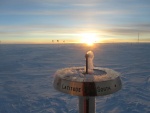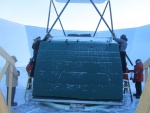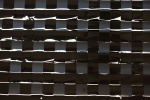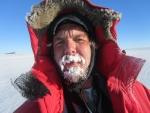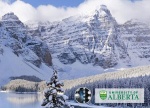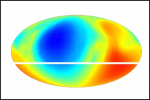Tuesday, April 8, 2014 - 9:45am
Located deep within the ice at the South Pole in Antarctica, the IceCube Neutrino Observatory watches for traces of the mysterious neutrino, a subatomic messenger from the cosmos that lends a greater understanding of far away events in the universe.
Monday, April 7, 2014 - 8:00am
The American Physical Society’s (APS) April Meeting 2014 is currently underway in Savannah, Georgia. The meeting, which began on Saturday, April 5th, and runs through Wednesday, April 8th, includes presentations from a number of researchers from the Wisconsin IceCube Particle Astrophysics Center (WIPAC).
Monday, March 31, 2014 - 10:00am
We are excited to announce that Armando Caussade, a STEM educator from Puerto Rico, will travel to the South Pole, Antarctica, during the 2014–2015 polar season to support maintenance work on the IceCube Neutrino Observatory.
Friday, March 28, 2014 - 1:30pm
So many images from last week … where to begin? The IceCube winterovers captured quite a few shots of the sun as it continues to set.
Tuesday, March 25, 2014 - 8:00am
People often mention penguins when they’re asked to think about the South Pole. But they are quickly reminded that there are none to be found there
Thursday, March 20, 2014 - 2:15pm
It’s a small community wintering over at the South Pole—they help each other out. When not immediately involved in their detector duties, IceCube’s winterovers might be found volunteering their assistance with other scientific projects.
Monday, March 17, 2014 - 9:45am
What is this? And where would you find it at the South Pole station?
Friday, March 7, 2014 - 4:15pm
At the South Pole, apparently there’s “cold” and then there’s “really cold.” IceCube winterover Dag’s frosted visage tells you he’s in cold country, but his open coat perhaps gives away that it’s not yet “really cold.”
Tuesday, March 4, 2014 - 11:45am
The IceCube Collaboration spring 2014 meeting begins today in Banff, Canada. The meeting is hosted by IceCube collaborator and University of Alberta Physics Professor Darren Grant.
Thursday, February 27, 2014 - 11:45am
In a paper recently published in Science Express, cosmic ray data from IceCube was used alongside observations from NASA's Interstellar Boundary Explorer, or IBEX, in a study of the magnetic fields that surround our solar system.




